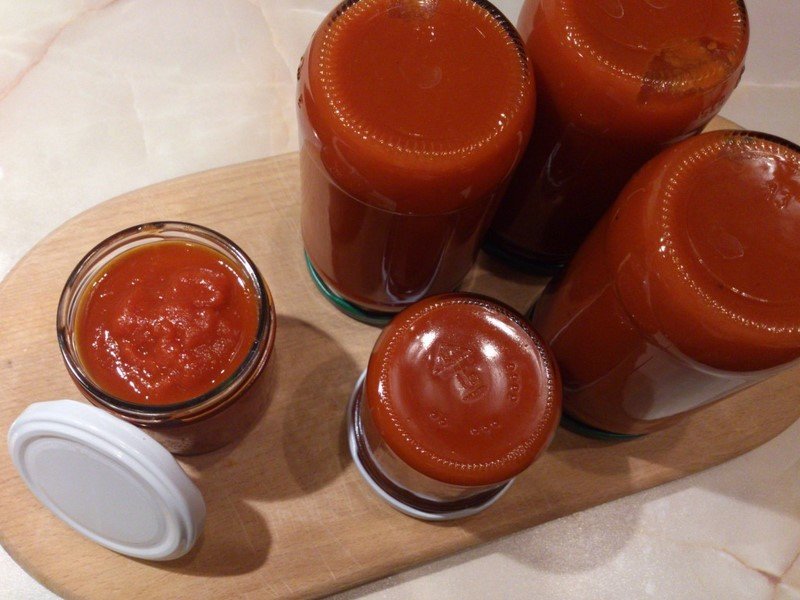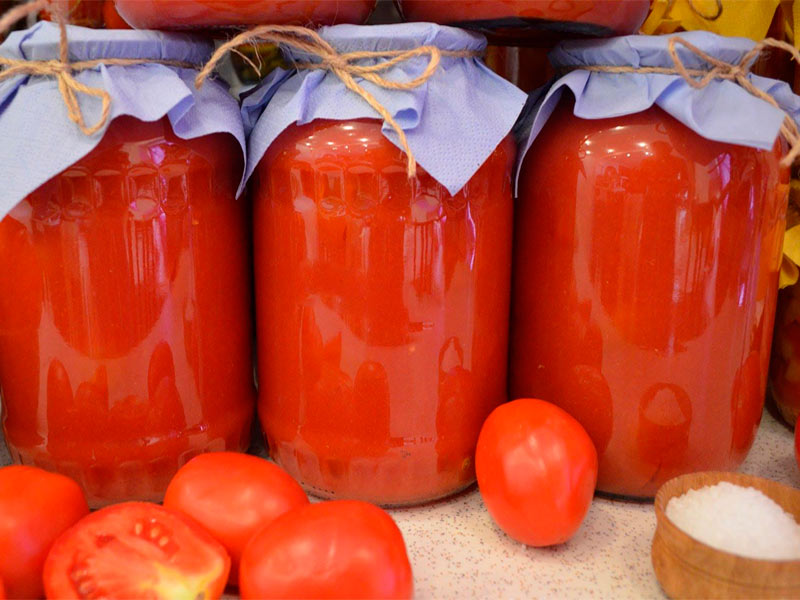A Classic Packaging Solution for Flavorful Delight
Introduction:
The tomato ketchup bottle is an iconic and prevalent packaging solution for one of the world’s most popular condiments. This article explores the history, design, and functionality of the ketchup bottle, examining how it has evolved over time to become an enduring symbol of convenience and deliciousness. From its humble beginnings to its modern adaptations, the ketchup bottle has become an essential aspect of the condiment industry.
Historical Background:
It is believed that ketchup originated in China, where similar sauces made from fruits and fermented fish were popular. The concept of ketchup made its way to Western cultures during European explorations. In the 18th century, ketchup recipes were brought to America, where tomatoes were added to the mix. Initially, ketchup was sold in corked bottles or jars, which posed several challenges such as spoilage and difficulty in pouring.
Invention of the Tomato Ketchup Bottle:
The advent of mass production in the late 19th century enabled the development of a more efficient packaging solution for ketchup. In 1876, Henry J. Heinz introduced the iconic glass bottle that revolutionized the way ketchup was stored and consumed. Heinz’s bottle had a wide neck and a narrow base, allowing for easier pouring and minimizing the risk of contamination. The bottle’s distinctive shape and bright red color quickly became synonymous with Heinz ketchup.
Design and Functionality:
The tomato ketchup bottle’s design has undergone various iterations over the years, each with its own functional upgrades. Glass bottles with metal or plastic screw-on caps became popular choices, followed by plastic squeeze bottles with nozzles for controlled dispensing. The transition to plastic bottles offered advantages such as reduced breakage risk and increased labeling flexibility.

Additionally, the incorporation of a valve or a diaphragm in squeeze bottles ensures that the ketchup flows smoothly and prevents excess air from entering the bottle, thereby minimizing product wastage. Manufacturers also introduced upside-down bottles to ensure that the ketchup is always ready to pour, eliminating the need for tapping or shaking the bottle to get the sauce to flow.
Marketing and Branding:
The tomato ketchup bottle has become more than just a vessel for packaging the condiment; it has also played a significant role in branding and marketing efforts. Companies like Heinz have capitalized on the recognizability of their bottle design, making it a key component of their brand identity. The distinctive shape and color scheme trigger instant recognition and create a sense of trust and familiarity among consumers.
Moreover, the size and shape of the ketchup bottle influence consumer perceptions. Large, family-sized bottles are associated with value for money and practicality, while smaller, single-serve bottles cater to on-the-go convenience. Manufacturers have also ventured into innovative bottle designs, such as novelty shapes or customizable squeeze bottles, to further enhance their brand image and capture consumer attention.
Sustainability and Packaging Innovations:
In recent years, the packaging industry, including ketchup bottle manufacturers, has faced increased scrutiny regarding its environmental impact. Plastic bottles, in particular, have drawn criticism due to their contribution to plastic waste. In response, companies have explored various sustainable packaging options.
One such alternative is the development of bio-based or plant-based plastics derived from renewable resources like sugarcane or corn. These materials have the potential to reduce reliance on fossil fuels and minimize carbon emissions. Additionally, companies have introduced bottles made from recycled plastic and implemented recycling programs to promote circular economy practices.
Furthermore, advancements in packaging technology have allowed for the creation of pouches and refillable dispensers, reducing the need for excessive packaging materials. These innovations not only address environmental concerns but also cater to changing consumer preferences.
Conclusion:
The tomato ketchup bottle has undergone significant transformations since its inception, adapting to changing consumer needs and market demands. Its evolution from corked glass bottles to plastic squeeze bottles represents a journey marked by convenience and improved functionality. Furthermore, the tomato ketchup bottle has become an integral part of branding and marketing efforts, with its iconic design and color scheme driving recognition and loyalty among consumers.

As sustainability becomes an increasingly important consideration, the ketchup bottle industry is striving to develop more environmentally friendly packaging solutions. By exploring alternatives such as bio-based plastics, recycled materials, and innovative refillable designs, manufacturers are aiming to strike a balance between convenience, functionality, and sustainability, ensuring that the tomato ketchup bottle remains a cherished packaging solution for years to come.I. The Evolution of the Tomato Ketchup Bottle: A Historical Overview
The tomato ketchup bottle has come a long way since its humble beginnings. In the early days, ketchup was typically sold in corked bottles or jars, which presented various challenges such as spoilage and difficulty in pouring. However, with the advent of mass production in the late 19th century, a more efficient packaging solution was introduced.
In 1876, Henry J. Heinz revolutionized the ketchup industry with his iconic glass bottle design. This bottle featured a wide neck and a narrow base, making it easier to pour and minimizing the risk of contamination. Heinz’s bottle quickly gained popularity and became synonymous with his brand. It set the standard for ketchup bottles and influenced the designs that followed.
II. The Design and Functionality of the Tomato Ketchup Bottle
Over the years, the design of the tomato ketchup bottle has undergone various iterations, each with its own set of functional enhancements. One of the most significant developments was the transition from glass bottles to plastic containers. Plastic bottles offered advantages such as reduced breakage risk and increased labeling flexibility.
Additionally, manufacturers introduced squeeze bottles with nozzles for better control over the dispensing of ketchup. These bottles often feature a valve or a diaphragm that ensures smooth flow and prevents excess air from entering the container, minimizing product wastage. Some bottles also come with an upside-down design, ensuring that the ketchup is always ready to pour, eliminating the need for tapping or shaking.
III. Marketing and Branding Strategies Utilizing the Tomato Ketchup Bottle
The tomato ketchup bottle has not only served as a practical packaging solution but has also played a pivotal role in branding and marketing strategies. Companies like Heinz have capitalized on the recognizable design of their bottles to strengthen their brand identity and create a sense of trust and familiarity among consumers.
The shape and color scheme of the ketchup bottle trigger instant recognition and act as a visual cue to consumers. This branding element extends beyond just the bottle itself, as the design is often carried across other marketing materials, such as advertisements, packaging materials, and promotional campaigns. The tomato ketchup bottle has become an iconic symbol that represents quality and flavor.
IV. The Influence of Bottle Size and Shape on Consumer Perception

The size and shape of the tomato ketchup bottle can greatly influence consumer perceptions and purchasing decisions. Large, family-sized bottles are often associated with value for money and practicality, appealing to households with multiple members or frequent ketchup usage. In contrast, smaller, single-serve bottles cater to on-the-go convenience and individual portions.
Moreover, manufacturers have experimented with innovative bottle designs to capture consumer attention and enhance their brand image. Some companies have introduced novelty-shaped bottles, such as those resembling tomatoes or squeezable ketchup characters. Others have developed customizable squeeze bottles, allowing consumers to add their own flair to the packaging.
V. Sustainability Initiatives and Innovations in Ketchup Bottle Packaging
In recent years, sustainability has become a pressing concern in the packaging industry, including the ketchup bottle sector. Plastic bottles, in particular, have faced criticism for their contribution to plastic waste. To address these concerns, companies have been exploring various sustainable packaging options.
One alternative is the development of bio-based or plant-based plastics derived from renewable resources like sugarcane or corn. These materials offer the potential to reduce reliance on fossil fuels and minimize carbon emissions. Additionally, manufacturers have introduced bottles made from recycled plastic, contributing to the circular economy.
Furthermore, packaging technology advancements have led to the development of pouches and refillable dispensers, significantly reducing the need for excessive packaging materials. Refillable options not only minimize waste but also offer cost savings for both the consumer and the manufacturer.
VI. The Future of the Tomato Ketchup Bottle: Looking Ahead
As consumer preferences continue to evolve, the tomato ketchup bottle industry must adapt to remain relevant. With a growing emphasis on sustainability and eco-friendly practices, producers will likely invest in further research and development of innovative packaging solutions.
Future advancements may include the use of biodegradable materials, further reductions in packaging and waste, and the implementation of more advanced dispensing mechanisms. As technology improves, the industry may witness increased integration of smart packaging, such as digital labels or built-in freshness indicators.
In conclusion, the tomato ketchup bottle has played a crucial role in the condiment industry for centuries. Its evolution from corked jars to the iconic glass bottle and modern plastic designs demonstrates a commitment to convenience, functionality, and branding. As sustainability becomes a priority, the industry must continue to innovate and explore new packaging solutions that minimize environmental impact while maintaining the beloved qualities that make the tomato ketchup bottle an enduring symbol of flavorful delight.









